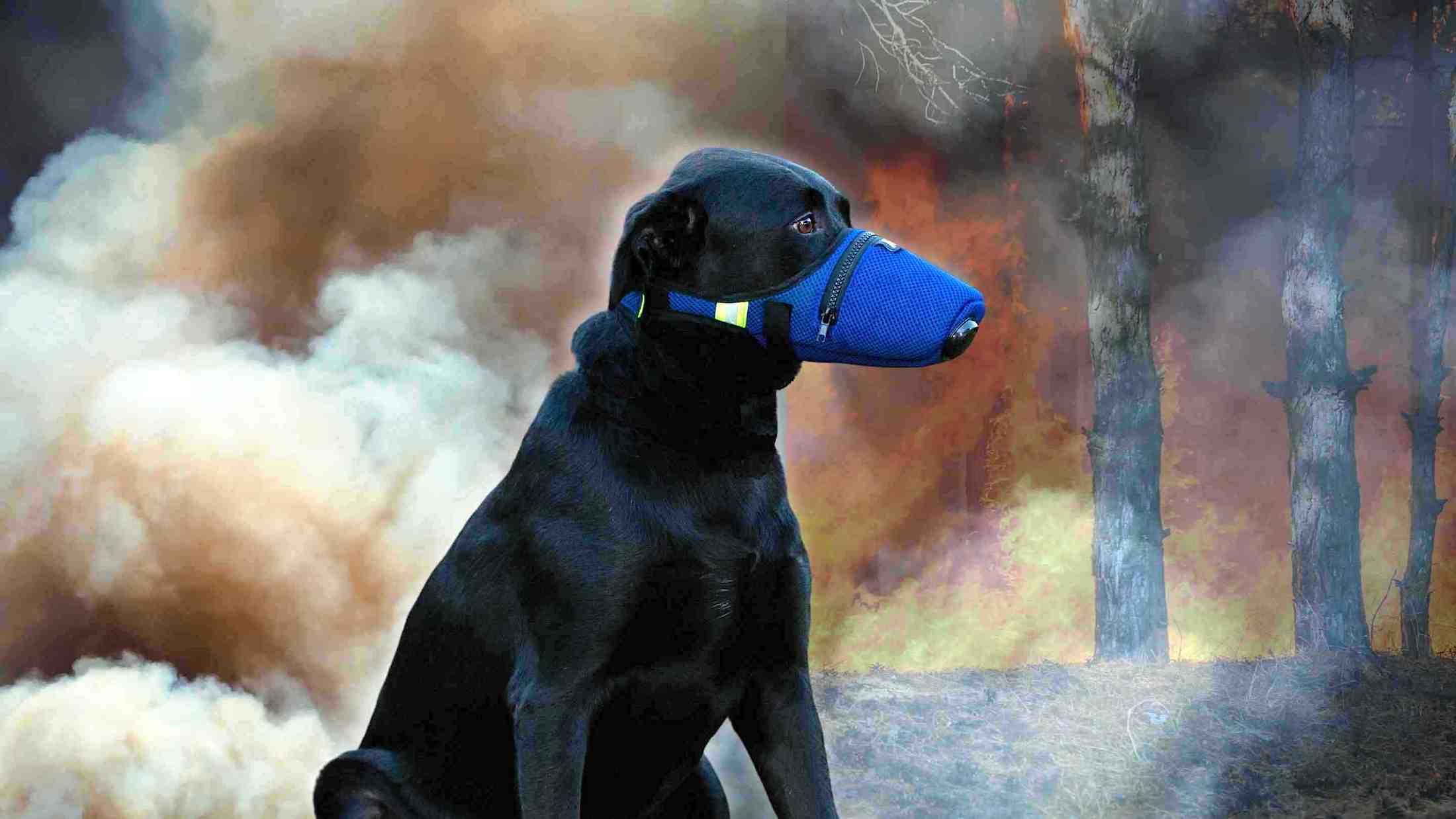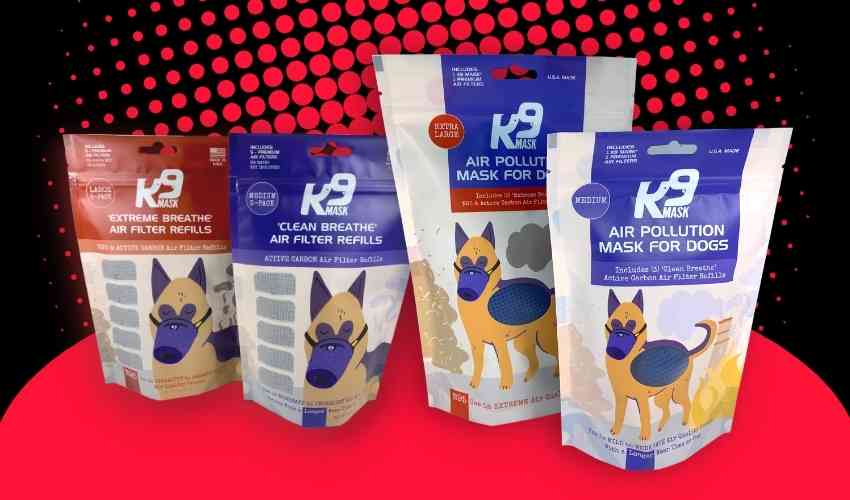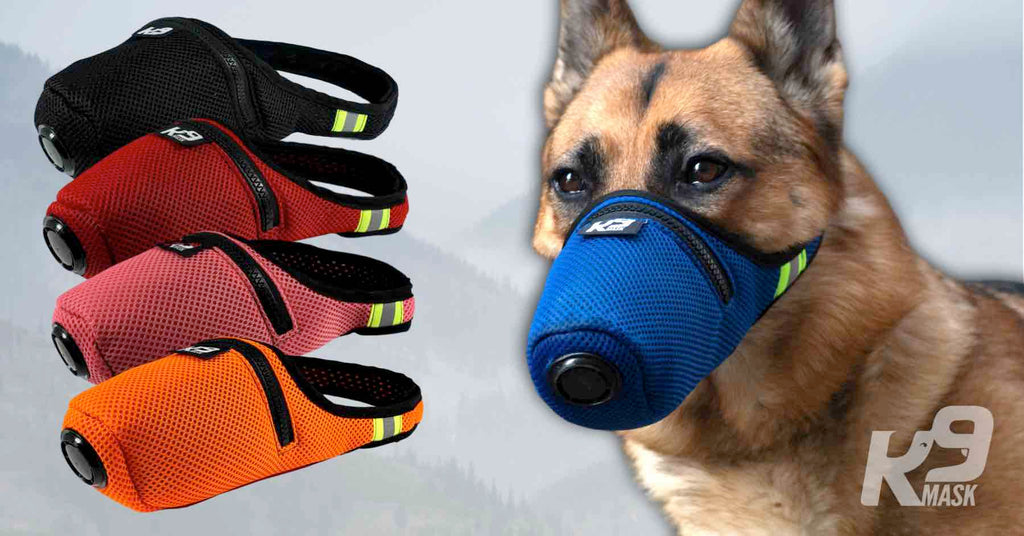How does the Air Quality Index, or AQI, affect my dog? The AQI is an index for reporting daily air quality. It tells you how clean or polluted your air is, and what associated health effects might be a concern for you.
The AQI focuses on health effects you or your dog may experience within a few hours or days after breathing polluted air. EPA calculates the AQI for five major air pollutants regulated by the Clean Air Act: ground-level ozone, particle pollution (also known as particulate matter), carbon monoxide, sulfur dioxide, and nitrogen dioxide.
For each of these pollutants, EPA has established national air quality standards to protect public health. Ground-level ozone and airborne particles are the two pollutants that pose the greatest threat to human and canine health in this country.

How Does the AQI Work?
Think of the AQI as a yardstick that runs from 0 to 500. The higher the AQI value, the greater the level of air pollution and the greater the health concern. For example, an AQI value of 50 represents good air quality with little potential to affect public health, while an AQI value over 300 represents hazardous air quality.
An AQI value of 100 generally corresponds to the national air quality standard for the pollutant, which is the level EPA has set to protect public and animal health. AQI values below 100 are generally thought of as satisfactory. When AQI values are above 100, air quality is considered to be unhealthy-at first for certain sensitive groups of people, then for everyone as AQI values get higher.
Understanding the AQI
The purpose of the AQI is to help you understand what local air quality means to you and your dog's health. To make it easier to understand, the AQI is divided into six categories:

Each category corresponds to a different level of health concern. EPA has assigned a specific color to each AQI category to make it easier for people to understand quickly whether air pollution is reaching unhealthy levels in their communities.
For example, the color orange means that conditions are "unhealthy for sensitive groups," while red means that conditions may be "unhealthy for everyone," and so on.
The six levels of health concern and what they mean are:
- 🟩 "Good" AQI is 0 to 50. Air quality is considered satisfactory, and air pollution poses little or no risk.
- 🟨 "Moderate" AQI is 51 to 100. Air quality is acceptable; however, for some pollutants there may be a moderate health concern for a very small number of people. For example, people who are unusually sensitive to ozone may experience respiratory symptoms.
- 🟧 "Unhealthy for Sensitive Groups" AQI is 101 to 150. Although general public is not likely to be affected at this AQI range, people with lung disease, older adults and children are at a greater risk from exposure to ozone, whereas persons with heart and lung disease, older adults and children are at greater risk from the presence of particles in the air.
- 🟥 "Unhealthy" AQI is 151 to 200. Everyone may begin to experience some adverse health effects, and members of the sensitive groups may experience more serious effects.
- 🟪 "Very Unhealthy" AQI is 201 to 300. This would trigger a health alert signifying that everyone may experience more serious health effects.
- 🟫 "Hazardous" AQI greater than 300. This would trigger a health warnings of emergency conditions. The entire population is more likely to be affected
Mobile Technology Weather Apps Include AQI data
Check your mobile phone's Weather App to see if it includes Air Quality Index (AQI) for your location. Most Weather Apps are now including this local data. Make sure it is healthy for you and your pet to be outside based on the readings provided for AQI.

K9 Mask® Air Filter Solutions for Various AQI Readings
- 'Clean Breathe' Air Filters - For use in AQI 100-250, "Moderate to Unhealthy"
- N95 'Extreme Breathe' Air Filters - For use in AQI days of 250-500, "Unhealthy to Hazardous"

What makes the 'Clean Breathe' Air Filters Unique?
- Use in 'Moderate' to 'Unhealthy' AQI 100-250.
- Active Carbon filter bonds with air pollution molecules reducing toxins and ozone.
- PM10+ Large Particle filter captures dust, ash, lint, soot, and pollen.
- Reduces Ozone by 90%.
- Filters 99% of visible airborne particles.
- Longer wear time on a dog for 30 minutes with constant visual monitoring.

What makes the 'Extreme Breathe' Air Filters Unique?
- Use in 'Unhealthy' to 'Hazardous' AQI 250-500.
- N95 filters up to 95% of non-oil based particulate matter.
- PM2.5 filters harmful toxic particles as small as 2.5 microns in width like smoke, ash, dust, chemicals, allergens, pollen, soot, smog, and bacteria.
- Activated carbon filter bonds with pollution molecules reducing toxins and ozone.
- Reduces Ozone by 90%.
- Shorter wear time on a dog for 10 minutes with constant visual monitoring.
RELATED ARTICLES:















